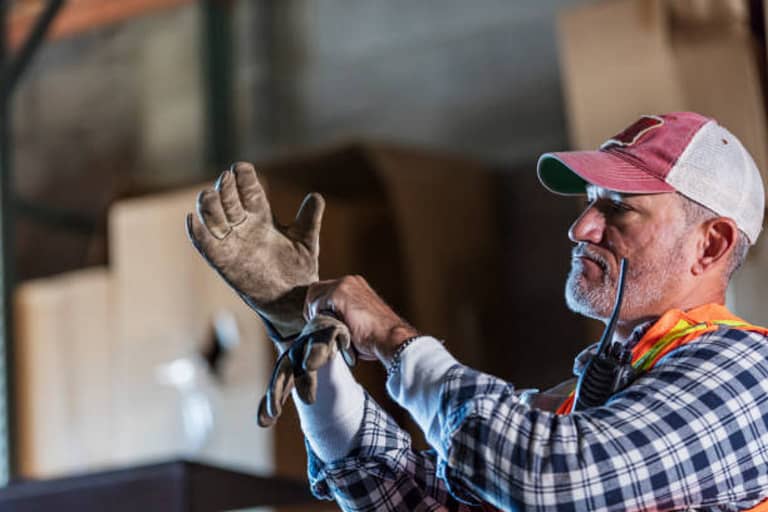Toolbox Talk: Hand Tools and Injury Prevention
September 18, 2020

We use our hands for virtually every task we do. Without our hands and all of our fingers we could not complete work easily. While gloves are the most common form of PPE found in the workplace, hand injuries are still the second leading type of injury on the job.
Hand Injury Statistics (source: www.bls.gov)
- There are 110,000 lost time cases due to hand injuries annually.
- 1 million workers are treated in an ER for hand injuries annually.
- 70% of workers who experienced a hand injury were not wearing gloves.
- Another 30% of victims had gloves on, but they were damaged or inadequate for the work task.
Three Common Types of Hand Injuries
- Lacerations are the most common type of hand injuries. Lacerations are due to sharp objects or tools. Often inadequate gloves are used during an activity that involves a sharp tool. A glove with Kevlar is effective in protecting the hand against a cutting or slicing motion. A straight stab motion can still easily penetrate these gloves. Caution needs to be used when using any tool that can easily penetrate the skin.
- Crush injuries are usually due to employees placing their hands in the line of fire between two objects or in a rotating piece of equipment. It may be more beneficial to not wear gloves where they can get caught in machinery and pull the hand into a crush injury situation.
Evaluate the work task with a subject matter expert or safety professional to decide what protection, if any, is needed on maintenance tasks.
- Fractures occur when there is a sudden blow to the bones in the fingers or hands. Motor vehicle accidents often cause fractures to the hands. Another common cause of fractures is an individual extending out their hands to catch themselves from a fall.
Safe Work Practices
- Use tools instead of your hands when possible to get your hands out of the line of fire during a work task. Tools such as push sticks when using a table saw is an example that removes your hands from the line of fire.
- Avoid using fixed open blade knives whenever possible. There are safety knives that limit the length of the blade exposed. They also have a safety feature that retracts the blade when pressure is let off the handle or switch that controls the blade.
- Never put your hand in an area where you cannot see it.
- Always wear the proper gloves for whatever work task you are doing. Understand the limitations of your gloves and what work tasks they are appropriate for.
- Never work on an energized piece of equipment. Lock and tag out the equipment to ensure there will not be unintentional start up while you are working on the equipment.
Discussion points:
-What are some of the biggest hazards to our hands onsite?
Source: 106 Toolbox Talks: Innovative Safety Products, LLC
